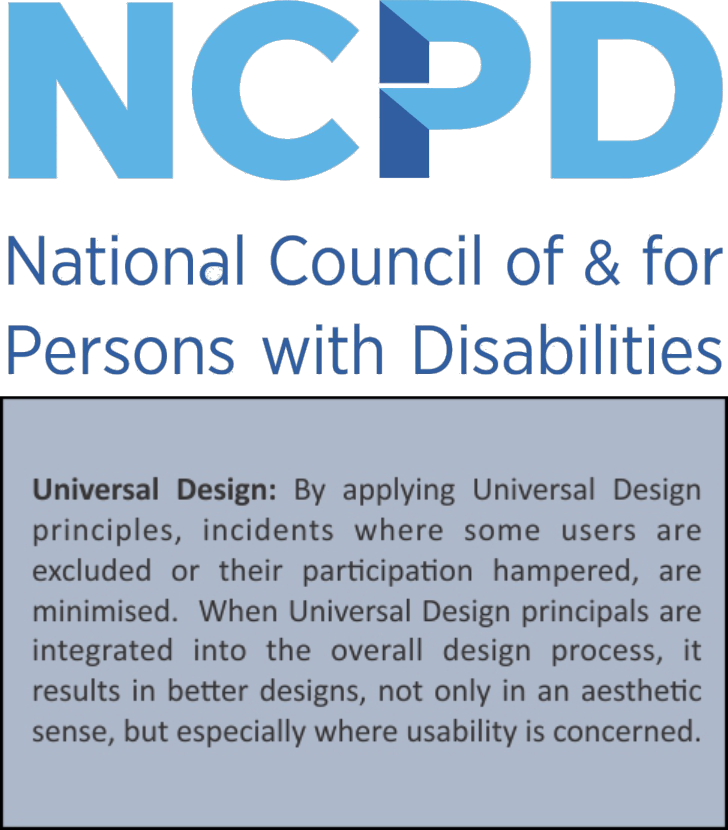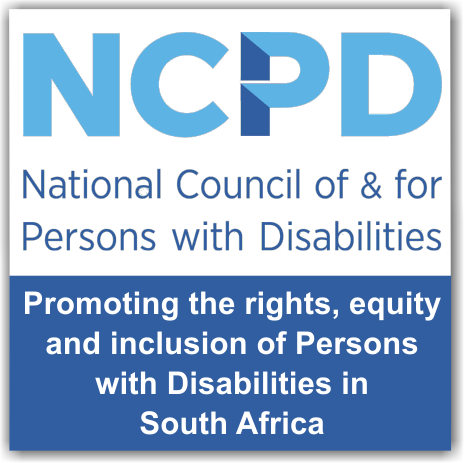Ramps, Stairs & Hand Rails
Introduction
A wheelchair ramp is an inclined plane installed in addition to or instead of stairs. Ramps permit wheelchair users, as well as people pushing strollers, carts, or other wheeled objects, to more easily access a building.
A wheelchair ramp can be permanent, semi-permanent or portable. Permanent ramps are designed to be bolted or otherwise attached in place. Semi-permanent ramps rest on top of the ground or concrete pad and are commonly used for the short term. Permanent and semi-permanent ramps are usually of aluminum, concrete or wood.
Ramps must be carefully designed in order to be useful. Many jurisdictions have established minimum widths and maximum slopes. A less steep rise can be easier for a wheelchair user to navigate, as well as safer in wet or icy conditions.
The South African National Standard for Building Regulations
The South African National Standard for Building Regulations state that Wheelchair ramps (or other ways for wheelchair users to access a building, such as a wheelchair lift) are required in new construction for public accommodations in South Africa. They also state that these wheelchair Lifts & Ramps must meet certain regulations & requirements.
People with disabilities should be able to safely enter the building (Ramps) and be able to safely use all the facilities within it – specifically toilets. (Disabled Toilets)
There must be a means of access that is suitable for people with disabilities to use. In addition, access must be available from various approaches of the building via the main entrance and any secondary entrances, and should lead to the ground floor.
There must be a means of egress (a point of departure) that is suitable for people with disabilities to use in the event of any sort of emergency. This relates to any sort of emergency, but in addition, a further clause states that departure routes (or egress) must also be designed in accordance with Part T of the regulations, namely the section that relates to Fire Protection.
Unfortunately many buildings in South Africa were not designed and built to accommodate wheelchair users or the elderly. The owners of these buildings may therefore be challenged by the need to find architects and renovators familiar with accessible design issues in order to make them accessible. There are various Organizations and Companies that can assist with Universal Design and Access to make sure that persons with disabilities are not excluded from any events, services, information, communication, products and venues.
Organizations & Companies That Can Assist With Universal Design & Access
There are now various Organizations and Companies that specialize in Universal Design and Access and can advise you on how to design these Ramps, Stairways & Hand Rails to make sure that persons with disabilities have equal rights and that they are safe for everyone. The National Council of and for Persons with Disabilities (NCPD), Bradshaw LeRoux Consulting, The QuadPara Association of South Africa (QASA) and DiSA specialize in Universal Design and Access to make sure that persons with disabilities are not excluded from any events, services, information, communication, products and venues. These Organizations and Companies can assist in different ways including:
The National Council of and for Persons with Disabilities (NCPD): believe that this can be prevented by applying Universal Design Principals during the design phase and they therefor offer the following services to assist:
- Workshops for architects, developers and other building professionals to develop an understanding of universal design and access.
- Facilitating access audits for new or existing buildings; echo e-access for the natural and communication environment. Audits are followed by a report indicating shortfalls and recommendations.
- Marketing of facilities that are accessible to persons with disabilities
Contact Fanie Swanepoel or Danie Marais for more information on Tel: +27 11 452 2774 or email them on: fanies@ncpd.org.za or danie@ncpd.org.za
Bradshaw LeRoux Consulting: Bradshaw LeRoux Consulting conducts Environmental Accessibility Audits designed to identify environmental barriers that could hinder access for Persons with a Disability. Our consultants will review your site, note potential barriers from a functional and safety perspective, and propose cost-effective solutions which can be actioned within short, medium and longer term time frames. Our reports are practical in nature, specific in the solutions offered, and allow for ease of use by all. Relevant to all environments, from corporate offices, manufacturing or industry sites, education facilities or hospitality environments, we can assist.
QASA: The QuadPara Association of South Africa (QASA) is a non-profit organisation (NPO 000-881) of Quadriplegics and Paraplegics in South Africa. QASA’s mission is “to improve lives by securing resources to advocate, educate, capacitate, support and mobilize”. QASA’s vision is that “all quadriplegics and paraplegics will live their lives to their full potential”. QASA develops products, programmes and services for quadriplegic and paraplegic members to build their capacity and ensure opportunities for societal integration and empowerment.
will live their lives to their full potential”. QASA develops products, programmes and services for quadriplegic and paraplegic members to build their capacity and ensure opportunities for societal integration and empowerment.
These Services include but are not limited to Access Audits:
An access audit is a form of inspection that can be used to assess the ease of access to, and ease of use of an environment (such as a building or landscape), a service, or a facility, by people with a range of access impairments.
Everyone has the right to be able to fully participate within society, and the built environment and accessibility plays a vital role in achieving this goal. Persons with mobility impairments are faced with physical barriers that exclude them from societal integration, be that in the workplace, educational & recreational facilities.
Bearing this in mind it is of utmost importance that we make our spaces accessible, it is not only an issue of equality and justice, but it makes good business sense, and adds to contributing to the development of a more inclusive and equal society.
Access Audits identify features including:
- The current accessibility of the building
- Areas for improvement (e.g. no accessible parking in the car park or the door in the accessible toilet on the ground floor is incorrectly located and therefore the building is inaccessible)
- Good/bad practice in relation to facilities management that an organisation has in place; positive accessibility features (e.g. counter tops at reception, good use of lighting and colour throughout building, signages)
Benefits of Accessible Environment:
- Increases the pool of potential new employees that an employer can tap into
- Retain existing employees who may acquire a disability through an accident / medical condition
- Enables more persons with disabilities to enter the building and /or use the services
- Improves overall safety of buildings, which has a direct impact on the number of accidents taking place and therefore the cost of insurance premiums.
Click on the link above to find out more about "Access Audits", or visit our Organizations - QASA Page to find out more about QASA and the other Projects and Services that they provide, or their website at www.qasa.co.za.
These Organizations and Companies listed above which specialize in Universal Design and Access will follow those standards set by "The National Building Regulations and Building Standards Act" to make sure that persons with disabilities are not excluded from any events, services, information, communication, products and venues.
Ramp Design Regulations
NOTE 1: Ramps might be required for use by persons without disabilities, for example, persons pushing trolleys who require ramps as an alternative to stepped access.
NOTE 2: Ramps should only be provided where level access cannot be achieved. Where a ramp is provided, stepped access should normally accompany it for persons with ambulant disabilities who find ramps difficult to use.
4.8.1 Any ramp or series of ramps shall provide a safe, comfortable and convenient route for wheelchair users.
4.8.2 Any ramp provided in terms of this part of SANS 10400 shall
- have a gradient, measured along the centre line, that is not steeper than 1:12 ;
- have a clear, trafficable surface not less than 1 100 m wide;
- have a surface in accordance with 4.5;
- have a landing at the top and bottom of each ramp of not less than 1,2 m in length (clear of any door swing) and of width not less than that of the ramp;
- comply with the requirements between landings as given in table 2 and figure 11;
- have a handrail on both sides of the ramp or, where the width is greater than 2,4 m, a central handrail in accordance with the requirements of 4.10 where the gradient is steeper than 1:15;
- where ramps in the same direction are used for a vertical rise of more than 600 mm, be staggered by the width of the ramp, in order to prevent a long straight line of ramps (see also 4.8.2(d)).
NOTE: Where the total rise contemplated for a series of ramps is greater than 2 m, consideration should be given to alternative means of vertical circulation.
Table 2 — Ramp requirements between landings
| 1 | 2 | 3 |
| Gradient | Maximum vertical rise mm | Maximum ramp length between landings meters |
| 1 : 12 | 500 | 6 |
| 1 : 15 | 665 | 10 |
| 1 : 20 | 750 | 15 |
4.8.3 No door leaf or window shall open onto a ramp or landing (see also 4.8.2(d)).
4.8.4 The camber or banking on walkways and ramps shall not exceed 1:50.
4.8.5 At any point where the clear height of the area below the soffit is less than 2,1 m, and it is not enclosed, the means of limiting inadvertent access to such area shall be indicated.
4.9 Stairways
4.9.1 Stairways shall comply with the requirements of SANS 10400-M, SANS 10400-T and the following requirements:
- the width of any stairway, measured to an enclosing wall or balustrade, shall be at least 900 mm;
- a landing that serves two flights of stairs in the same straight line shall be of length at least 1 100 mm;
- the rise of each tread step shall be of the same height and shall not exceed 170 mm;
- solid risers shall be provided in all accessible routes;
- a stairway shall be provided with handrails on both sides of the stairway in accordance with the requirements of 4.10;
- The maximum height allowed in a flight of stairs, between landings, shall not exceed 1,530 m;
- The stairway shall not include any winders (as defined in SANS 10400-M);
- No spiral stairway shall form part of an accessible route.
4.9.2 Nosings shall effectively contrast with their immediate surroundings. The minimum dimensions of each nosing shall be 40 mm × 40 mm.
NOTE: Further guidance on contrast and methods of measurement is provided in SANS 784.
4.9.3 Outdoor stairs and outdoor approaches to stairs shall be so designed that water will not accumulate on walking surfaces.
4.9.4 Tactile guidance, where provided, shall be in accordance with the relevant provisions of SANS 784.
4.10 Handrails
The design and construction of handrails shall be in accordance with the following:
- handrails shall have an elliptical gripping surface profile that is approximately 50 mm wide and 40 mm deep, or a circular profile of diameter not less than 35 mm and not more than 50 mm;
- the height to the top of a handrail from the nosing of the tread of the stairs or from the surfaces of a ramp shall be in the range 900 mm to 1 000 mm and shall remain consistent along the length;
- handrails shall be securely fixed and shall be rigid;
- the surface of the handrail and wall, or any other surface adjacent to them, shall be free of any sharp or abrasive elements;
- the clear width between a handrail and an adjacent wall shall be at least 60 mm;
- handrails shall extend 300 mm horizontally beyond the top and bottom of the ramp or stairway (see figure 12 and shall return to the supporting structure or shall be finished with a positive return, and the minimum dimensions for landings on escape routes as required in SANS 10400-T shall be maintained;
- handrails shall be continuous between landings where this does not create a hazard;
- handrails shall be supported centrally from below with not less than 50 mm between the underside of the handrail and the top of the support;
- where a stairway is wider than 2,4 m, a handrail shall be provided at no more than 2,4 m intervals.
NOTE: Handrails that extend at the top and bottom of a stairway are a tactile aid for persons with visual impairments, and a balancing aid for ambulant persons with disabilities.
Links
- Building Regulations for facilities for Disabled Pdf.
- Standard Electrical, Mechanical And Architectural Guideline For The Design Of Accessible Buildings (Facilities For Disabled Persons)
To find Companies and Organizations that can assist you, visit our "Services & Service Providers" Search Facility. If you require any Products listed on this page, visit our "Products" search facility.




